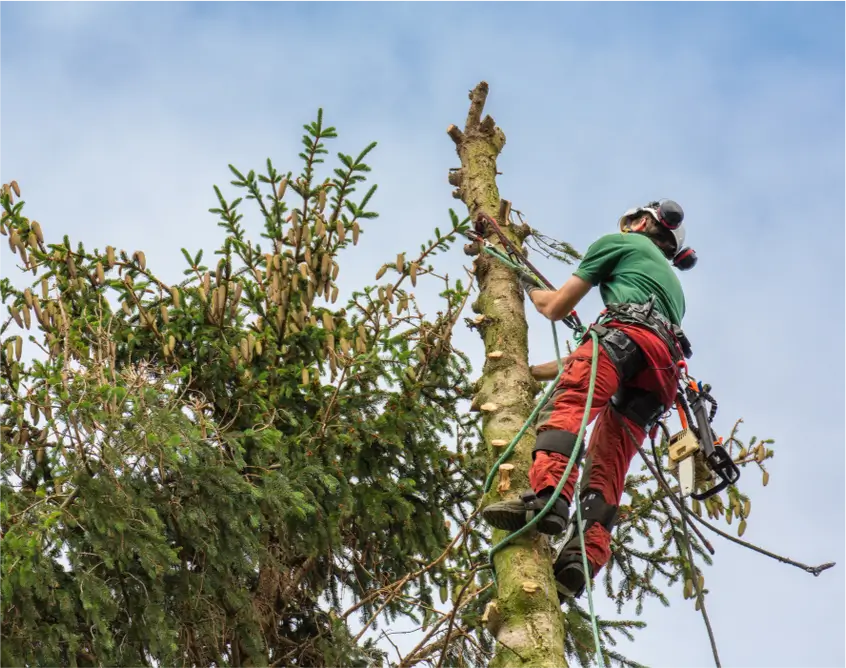Roots are the hidden foundation of any plant, essential for stability, nutrient absorption, and overall health. However, when it comes to trees and shrubs in our backyard, root problems can emerge, causing various issues ranging from structural damage to tripping hazards. Here, we will delve into the common backyard root problems, exploring their causes, effects, and possible solutions.
Tree Planted Too Deep:
One of the primary culprits behind root problems in backyards is incorrect planting depth. When a tree is planted too deep, its roots struggle to access sufficient oxygen and nutrients, leading to stunted growth and disease susceptibility. Incorrect planting depth is one of the most prevalent planting problems.
- Causes: Trees are often planted too deep due to improper digging of the planting hole or excessive mulching around the base of the tree.
- Effects: Trees with roots planted too deep may exhibit poor growth, yellowing leaves, and structural instability. Over time, this can lead to the tree’s decline and eventual death.
- Solutions: To remedy this issue, it’s essential to ensure that the root flare—where the trunk widens at the base—remains at or slightly above the soil level. Properly digging the planting hole and avoiding excessive mulching can prevent this problem. You can contact a professional arborist for assistance in this task.

Growing in Pipes:
Another common root problem in backyards is when tree roots infiltrate underground pipes, including sewage lines, irrigation systems, and water pipes. As roots search for moisture and nutrients, they may find their way into small pipe cracks and joints, causing blockages and damage.
- Causes: Trees planted near underground pipes are more likely to send their roots searching for moisture, especially during periods of drought. Additionally, older pipes with cracks or joints provide easy entry points for roots.
- Effects: Root infiltration into pipes can lead to clogs, leaks, and even complete blockages, resulting in costly repairs and potential environmental hazards.
- Solutions: Installing root barriers between trees and pipes can help prevent root intrusion. Regular inspection and maintenance of underground pipes can also detect early signs of root infiltration, allowing for timely intervention.
Root Damage Due to Traffic On-Ground:
In yards with heavy foot traffic or vehicular movement, tree roots may suffer damage from compaction or physical injury, compromising their health and stability.
- Causes: Continuous pressure from foot traffic, construction equipment, or vehicles can compact the soil around tree roots, reducing their ability to absorb water and nutrients. Additionally, mechanical damage from lawnmowers or other gardening tools can injure roots.
- Effects: Compacted soil restricts root growth and can lead to soggy conditions, promoting root rot and other diseases. Root injuries increase the tree’s susceptibility to pests and pathogens.
- Solutions: Implementing measures to minimize traffic over root zones, such as installing walkways or protective barriers, can alleviate compaction and reduce the risk of root damage. Using mulch around trees can also help improve soil structure and moisture retention.
Roots Damaging the Pipelines:
Beyond infiltrating underground pipes, tree roots can also cause damage to water and sewer lines running through the yard, posing a significant risk to the property’s plumbing system.
- Causes: As roots grow, they exert pressure on pipes, causing them to crack or rupture. Additionally, roots are attracted to sources of moisture, prompting them to penetrate pipes in search of water.
- Effects: Root intrusion into pipelines can lead to blockages, leaks, and sewage backups, resulting in costly repairs and potential health hazards.
- Solutions: Regular inspection and maintenance of underground pipelines, including root-killing chemicals or mechanical root removal techniques, can help prevent and address root damage. Installing root barriers around vulnerable pipes can also provide additional protection.
Tripping Hazards:
When roots grow close to the surface, they can create tripping hazards for pedestrians, posing a safety risk, particularly in high-traffic areas of the yard.
- Causes: Shallow-rooted trees or trees planted in compacted soil are more likely to develop surface roots. Additionally, erosion or soil disturbance can expose roots near the ground’s surface.
- Effects: Exposed roots can cause individuals to trip and fall, leading to injuries. Moreover, mowing over surface roots can damage the origins and the lawnmower.
- Solutions: Installing barriers or edging around trees can help prevent soil erosion and keep roots from becoming exposed. Regularly monitoring and trimming surface roots can also mitigate tripping hazards.
Conclusion:
Understanding the common root problems that plague backyard trees and shrubs is crucial for maintaining a healthy and safe outdoor environment. By identifying the causes, effects, and potential solutions to issues such as incorrect planting depth, root intrusion into pipes, and surface root hazards, homeowners can take proactive measures to protect their landscaping investments and ensure the long-term vitality of their backyard ecosystem.

